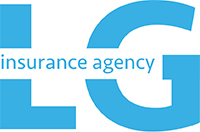According to the National Centers for Environmental Information, last summer’s storms caused billions of dollars in damages. Hail, strong winds, and hurricanes caused most of this damage, and evidence suggests we can expect the power and duration to increase.
Follow these steps to protect your business from the high losses that summer storms can cause.
Prepare an Emergency Plan
A well-crafted emergency plan ensures personnel protection and business continuity. Establish a committee to develop a plan to evacuate staff and to protect valuable data, documents, and equipment. You may also ask them to opt-in to weather alerts so they can set things in motion if you’re directly in a storm’s path.
Scheduled off-site backups, a waterproof safe and backup power are all simple measures to ensure you can survive the onslaught and resume business soon after the storm ends. Detailed procedures including powering down vital equipment can prevent unnecessary damages and costly repairs. Checklists work well when a storm is looming.
Your committee can develop work-from-home plans if it suits your business, providing employees have electricity and internet access during and after the storm. They can determine how best to communicate with employees and essential parties during a severe weather event and ensure you have properly trained first aid personnel and first aid equipment available in your workplace.
Once you’ve discussed and finalized your plan, make it available to management and staff and connect with disaster restoration services should you need their services later.
Practice Your Plan
Practice makes perfect, so conduct emergency simulations at least quarterly. Record any problems, revise your plan, and continue to do so until everyone seems confident they understand what they need to do.
Record Vital Information
Communication is extremely important during a major storm so your committee will need to maintain a current list of all management and employees, telephone numbers, and emails.
You should also have an emergency contact list that includes your local emergency response team number, law enforcement agencies, key government officials, hospitals and medical centers, media contacts, and your insurance agent.
Check Flood Zone
With so much of New Jersey resting on the water we’re very prone to flooding. Both Hurricane Sandy and Hurricane Irene brought 100-year flooding to the state. When heavy rains hit, the risk of flash floods increases dramatically, too.
Check the FEMA Flood Map to discover whether your business sits in a flood zone. If so, your emergency plan should include moving vulnerable items to higher areas in your workplace to minimize damage before a storm.
Review Your Insurance Coverage
Most damage from storms is due to flooding and a standard business owner’s policy does not protect you. Your insurance agent can arrange for a flood insurance policy through the National Flood Insurance Program to protect your business. It’s a valuable form of coverage for any company, even if you’re not on a flood plain.
Your agent will also review your existing policy, eliminate insurance gaps, and address critical risks. An insurance review ensure your policy keeps pace with business growth and changes and minimizes risk.


